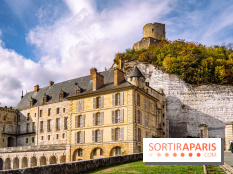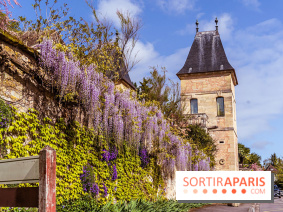In May 2021, we commemorate the bicentenary of Napoleon I's death. It's the perfect opportunity to take a look back at thehistory of Paris, and discover how the Emperor reshaped the face of the capital to create the city we know today.
Those who paid close attention in history class should remember a few things. But are you sure you know the full extent of the work undertaken by Napoleon I in Paris? Do you know which of the capital's most emblematic monuments were built on his orders? Let's take a stroll together , in the footsteps of Napoleon Bonaparte.
The Eiffel Tower is one of the best-known symbols of Paris. No, it wasn't commissioned by the Emperor. However, the Etoile and Carrousel triumphal arches were! With these gigantic monuments, installed in the heart of Paris, Napoleon wished to celebrate his victory and that of his soldiers at the Battle of Austerlitz. It was also to commemorate this victory that the victorious warlord had the Vendôme column built. A statue of Napoleon can be seen at the top of the column.
TheMadeleine church is another of the Emperor's projects. Originally, he wanted to build a temple in honor of the Grande Armée (the name of Napoleon's imperial army). A few years later, he changed his mind and decided to create a church.
Napoleon Bonaparte ordered the construction of two palaces in Paris. In 1807, work began on the Palais Brongniart, designed to house the Paris Stock Exchange. The following year, architects laid the foundation stone for the Palais d'Orsay, designed to house the Conseil d'État. The Palais d'Orsay was to become a railway station in 1900, and then the museum we know today.
The Emperor also wanted to beautify the capital. He ordered the Luxembourg Gardens to be enriched and magnified, and created the Ourcq, Saint-Martin and Saint-Denis canals. Under his orders, the Jardin des Plantes was built. He built the Pont d'Iéna, the Pont d'Austerlitz and the Pont des Arts, and installed dozens of fountains in Paris, most of which have since disappeared. However, the Fellah, Léda, Mars, Peace and Palm fountains can still be admired today.
To improve traffic flow in Paris, he had the Rue de Rivoli, Rue de Pyramides and Rue de Castiglione built. He also redeveloped the Père Lachaise cemetery.
Although he didn't build theHôtel des Invalides, the site remains strongly linked to the memory of Napoleon I: it's here that the Emperor's tomb can be found, making it an essential stop on this historical tour. And this summer, the Nuit aux Invalides sound and light show will unveil a grandiose spectacle based on this famous historical figure. And don't miss Notre-Dame de Paris, the famous cathedral where Napoleon Bonaparte was crowned Emperor of the French.
Feeling hungry? Stop for a moment at Procope, the oldest café in Paris. Napoleon loved to sit there. He even left his hat there after a meal! The hat is still on display at the entrance.
And in Île-de-France?
At the Château de Versailles, Napoleon decided to redevelop the Trianon estate as his country residence. The châteaux of Fontainebleau and Rambouillet also bear the Emperor's imprint, both having been refurbished and occasionally inhabited by Napoleon and his family.
And don't miss the Château de Malmaison, purchased by Joséphine de Beauharnais, Napoleon's wife. This magnificent site has seen many of Europe's crowned heads pass through its doors, and is now a museum.















